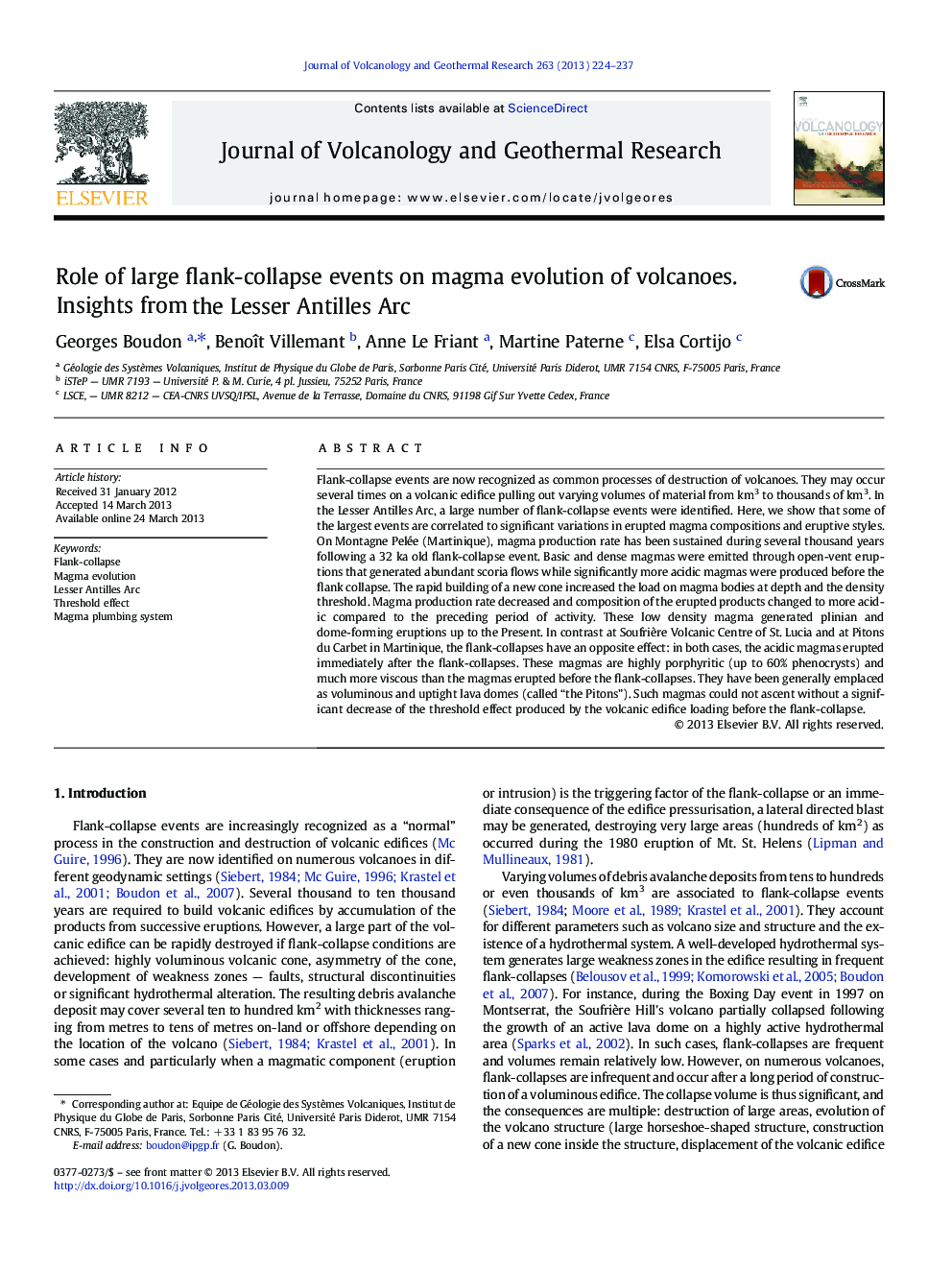| Article ID | Journal | Published Year | Pages | File Type |
|---|---|---|---|---|
| 6440101 | Journal of Volcanology and Geothermal Research | 2013 | 14 Pages |
Abstract
On Montagne Pelée (Martinique), magma production rate has been sustained during several thousand years following a 32 ka old flank-collapse event. Basic and dense magmas were emitted through open-vent eruptions that generated abundant scoria flows while significantly more acidic magmas were produced before the flank collapse. The rapid building of a new cone increased the load on magma bodies at depth and the density threshold. Magma production rate decreased and composition of the erupted products changed to more acidic compared to the preceding period of activity. These low density magma generated plinian and dome-forming eruptions up to the Present. In contrast at Soufrière Volcanic Centre of St. Lucia and at Pitons du Carbet in Martinique, the flank-collapses have an opposite effect: in both cases, the acidic magmas erupted immediately after the flank-collapses. These magmas are highly porphyritic (up to 60% phenocrysts) and much more viscous than the magmas erupted before the flank-collapses. They have been generally emplaced as voluminous and uptight lava domes (called “the Pitons”). Such magmas could not ascent without a significant decrease of the threshold effect produced by the volcanic edifice loading before the flank-collapse.
Related Topics
Physical Sciences and Engineering
Earth and Planetary Sciences
Geochemistry and Petrology
Authors
Georges Boudon, Benoît Villemant, Anne Le Friant, Martine Paterne, Elsa Cortijo,
